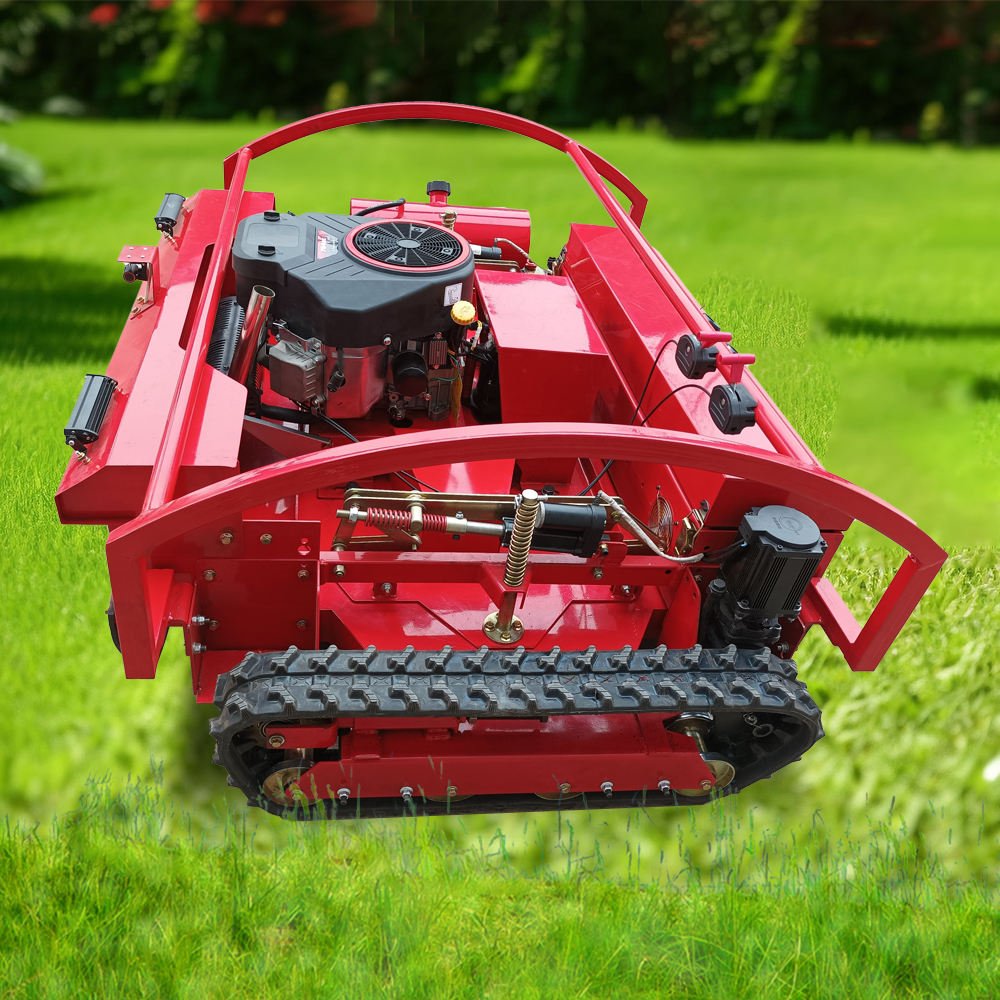

In modern agricultural production, the continuous advancement of technology has brought numerous conveniences and efficiency improvements to farmers and agricultural enterprises. Remote-controlled mowers are a prime example. These innovative devices are gaining increasing attention globally and are gradually changing the traditional mowing practices.
Remote-controlled mowers have many significant advantages in the agricultural field. First and foremost, their operational convenience greatly saves labor and time. Farmers can easily control the mower through a remote control or smartphone app without having to drive or operate it in person. This remote control method not only reduces the physical exertion of the operator but also minimizes fatigue caused by long hours of driving or operation.
Secondly, these mowers are equipped with advanced sensors and navigation systems that can accurately avoid obstacles and operate smoothly on complex terrain. For example, some high-end models of remote-controlled mowers can easily handle slopes as steep as 60 degrees without tipping over. This strong terrain adaptability makes them perform well in agricultural scenarios with complex terrain, such as orchards, vineyards, and hillsides.
Moreover, remote-controlled mowers can adjust the mowing height according to different crops and terrain to ensure the healthy growth of crops. For example, in orchards, the mower can trim the grass without damaging fruit trees, creating a favorable environment for their growth. At the same time, its precise mowing and mulching functions help spread the cut grass evenly on the ground, providing natural fertilizer for the soil and promoting soil fertility.
From a safety perspective, remote-controlled mowers also have significant advantages. When working on steep slopes or complex terrain, the operator can stay away from dangerous areas and control the mower safely through the remote control. This operation method effectively reduces the risk of accidents for the operator and enhances the safety of the work.
Remote-controlled mowers are suitable for a variety of agricultural scenarios. In orchards and vineyards, they can easily move between trees and grapevines to mow the grass precisely. This precise mowing ability helps keep orchards and vineyards tidy and reduces the competition for growth between weeds and fruit trees or grapevines.
On slopes and irregular terrain, these mowers can maintain stability and avoid tipping over. For example, in some mountainous farms where traditional mowers often struggle to work on steep slopes, remote-controlled mowers, with their advanced stabilization systems and powerful engines, can easily meet these challenges.
Moreover, they can work efficiently on large farms, reducing labor demand. For farm owners with vast areas of farmland, remote-controlled mowers can complete large-scale mowing tasks in a short time, significantly improving work efficiency.
In some special agricultural scenarios, such as solar farms, remote-controlled mowers can also play an important role. They can easily work under solar panels to maintain the vegetation, ensuring the normal operation of the solar panels.
From a global perspective, the market demand for remote-controlled mowers is growing rapidly. According to relevant data, the global market size of remote-controlled mowers is expected to reach 1.5 billion US dollars in 2025 and grow at an annual compound rate of 12%. It is projected to exceed 4 billion US dollars by 2033. This significant growth is mainly due to the increasing demand for convenient and efficient mowing solutions.
With the continuous advancement of technology, the intelligence level of remote-controlled mowers is also improving. For example, some new models of mowers are equipped with smart sensors and navigation systems that can automatically identify terrain and obstacles and complete mowing tasks according to preset programs. In addition, electric and solar-powered remote-controlled mowers are gradually replacing traditional fuel-powered mowers due to their environmental friendliness and low noise characteristics.
In terms of regional markets, North America and Europe are currently the main markets for remote-controlled mowers, but the Asia-Pacific region is expected to achieve the fastest growth in the next few years. This growth trend is mainly due to the rapid urbanization process, the increase in the middle-class population, and the growing attention to intelligent agricultural solutions.
Remote-controlled mowers, with their efficiency, safety, and environmental friendliness, are becoming an indispensable tool in modern agriculture. They not only improve the efficiency of agricultural production but also reduce labor costs and have minimal impact on the environment. With the continuous development of technology and the sustained growth of market demand, remote-controlled mowers are expected to play a greater role in the future and promote the development of agriculture towards intelligence and sustainability.